Brancepeth Castle Golf Club - the hardest 9th in Golf
Situated on the 'back roads' between the City of Durham and Bishop Auckland, Brancepeth Castle Golf Club occupies an undulating and picturesque setting in the grounds of the imposing building that dates, in part, back to Norman times. Jake Barrow headed to County Durham to meet Andy Welsh, the man charged with its upkeep.
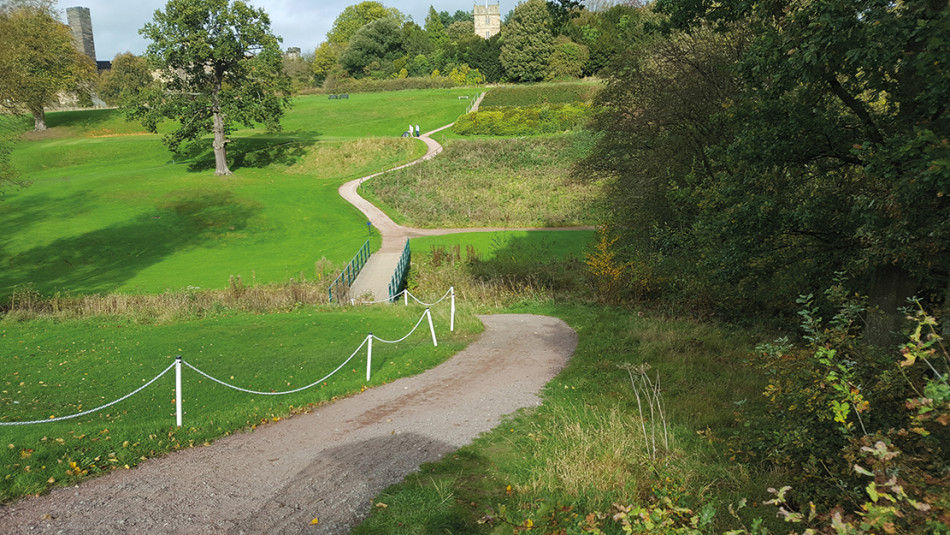
A sweet 3-iron strike from Brancepeth Castle's ninth tee may make the green; but it probably won't. It was once described by Superintendent magazine as the hardest ninth hole in golf.
Waiting for that ball to land is exciting. Just as pleasing, though, is the view as you walk to your ball, as you pass one of the North East's prettiest and best-preserved castles.
The undulations of the course by the castle are not man-made. Given that fact, they have to be experienced to be believed.
It's uncanny - each roll has such a uniform peak and trough that riding the higher fairways on a buggy feels like speeding over the waveforms on a cardiac monitor.
This has many effects, some positive and some not: it presents greenkeeping difficulties; the rolling fairways are a real added challenge when clubbing up on longer holes; the landscape is attractive and unique.
Primarily though, one constantly has the sense that the ground of this typically parkland course is ancient. This is typical of County Durham, as it is one of the country's most historic regions.
And, indeed, the grounds of the castle were once lush hunting grounds for all sorts of game. This included plenty of deer, but the fiercest challenge was the notorious wild boar.
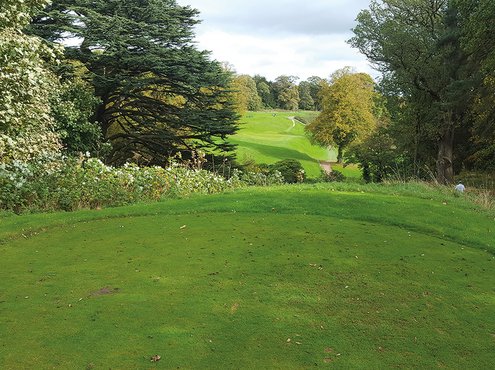

In fact, the name Brancepeth, also the name of the local village, is thought to be a derivation of 'Brawn's Path' ('brawn' being an archaic word for 'boar'); the iconic image of the beast now provides the basis for the golf club's logo.
As one might expect on such rugged 'forest' land, as the aristocrats once called their hunting grounds, flora at Brancepeth Castle is diverse.
The ninth hole is the star of the show in this respect too. The size of the Libani Cedar which dominates the dip between tee and green is remarkable, as is the variety of plant life surrounding it, from cherry blossoms to large ferns and lime trees.
Walking from tee to green, the castle is revealed over a tall hump to the player's left, and under this is the tiny green, which was cut out of the hillside using only hand tools.
Peter Alliss once compiled a list of his 'dream 18' chosen from any golf courses in the world. He included this tricky par 3. Consider how many great par 3s exist, and how many are drooled over on television during major championships. This is a true compliment.
It isn't only that excellent hole which features interesting gardens, however. Across the course, Head Greenkeeper Andy Welsh described the trees as "mainly hardwoods, with the odd pine".
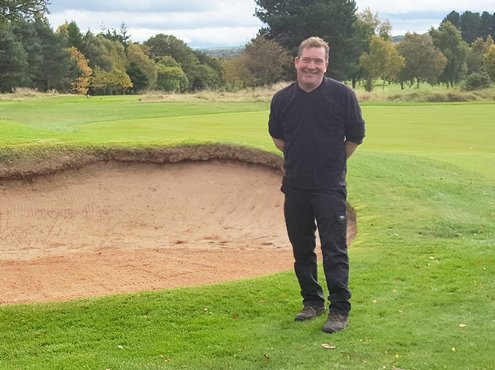
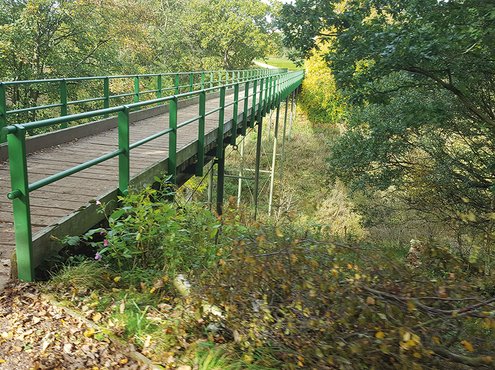
These are both a major pride and a major headache for the 44-year-old, who has been with the club for twenty-seven years.
Having been on staff for so long, Andy has been present for many major changes, including the renovation of all the bunkers.
It was less a love of turf, more a love of machinery, that inspired him to get into the job in the first place.
As a local boy, raised in the Bishop Auckland village of Crook which is a few miles from Brancepeth, he didn't need to travel far to find work.
He described seeing seeing the grass cutting going on out of the window of his schoolroom, whilst remembering that he always loved engines, including those in cars, as "a canny job".
He said: "The sort of things I'm interested in include race cars, machinery, fabricating, anything like that. So that pulled me in more than the golf."
"It doesn't run in the family professionally - my father was a teacher - but, he did like woodwork and metalwork, so that's maybe where the engineering stuff has come from."
"When I got here, the head greenkeeper was Roger Shaw, who really enjoyed doing things the newest and best way it could be done."

"He liked, shall we call it mechanisation and technicality, so that might have rubbed off on me whilst I was coming through too."
This is the part of the work he still tends to emphasise and, as such, he will be pleased that a new fleet of machines is on the way within the next month.
Being a members' club, he said, they tend to take budgets from a single pool. With this, they take five-year hire purchases to take on John Deere machinery.
And the club invests heavily: whenever one of the purchases is completed, they immediately begin the next one, so much of their equipment is recent, and there is a lot of it.
Being an ex-deer park, the ground is heavy, as the clay has been compacted over centuries into those picturesque, natural curves. Above this is perhaps three inches of lighter soil.
On the nature of the course, Andy said: "With it being a parkland course, we've got the original parkland trees at a couple of hundred years old, and the tiny ones we've planted, and you've got to maintain them with two different regimes."
"With the older ones, we have to monitor the decay. They have a few problems with a bug that affects the beeches, but that doesn't hit the little ones."
"Trees are a big part of what we do, and we try to work at thinning them every year, depending on weather conditions - we don't do much of that in really wintry conditions."
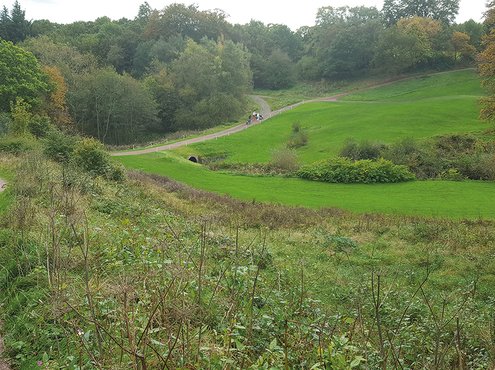
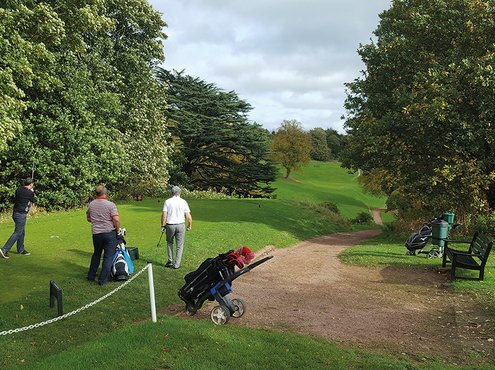
"We have a Leylandii hedge near one of the tees, the roots of which start to encroach into the path of the tee when it grows too much."
"We go in with a little digger and break up the roots to stop it affecting the growth there as much as it might."
The course runs over around 230 acres, but Andy described a lot of it as "ground you try not to play off", which highlights one of the challenges of the course.
Where the fairways are lightly rolling, a few of the rough areas are treacherously hilly. An errant ball at the correct length on that famous ninth, for example, will kick almost directly to the right by up to 50 yards.
These struggle to accommodate some of the machinery, so Andy and the team's aeration solutions contrast with his background in mechanical greenkeeping:
"It's not about the methods we use suiting me or how I was taught. The methods we use suit the course. When we're getting air into the dips and some of the fairways, we use a lot of hand tools. There's slitting, there's verti-draining, there's spiking."
"There are lots of dips and valleys out there. It's about a mile long, but only about half a mile wide. It runs length-wise to the hill, so the dips travel across the course directly."
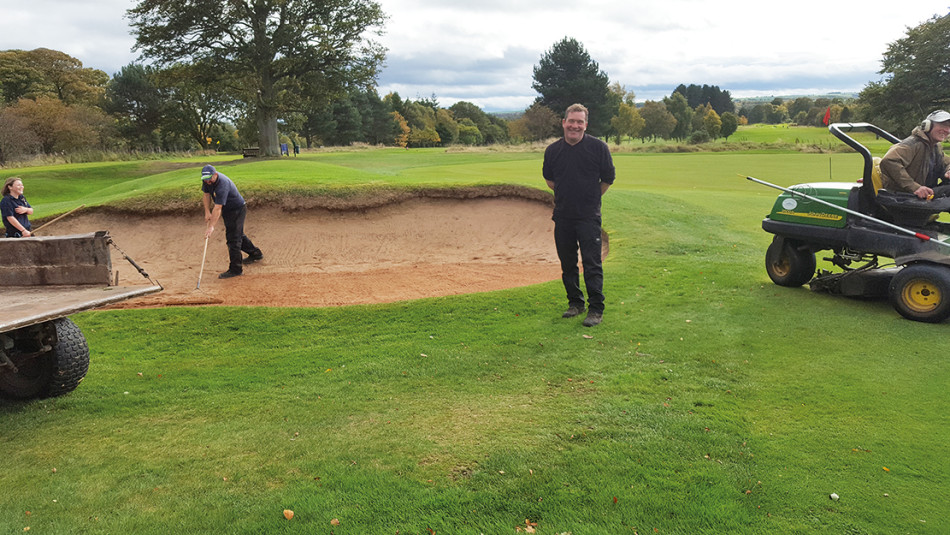
The par 71, 6,400-yard plot was designed by legendary Harry Colt in 1924, and it is accordingly distinctive. Its bumps, paired with trees like the twenty-five silver birches planted for Elizabeth II's Silver Jubilee, make a unique impression.
Colt constructed the tees and greens using push-up soil, and they have remained largely similar for their nearly 100 years.
Andy's team have added some, however, because some of them have become too small over time, as footfall has increased.
The 14th was rebuilt for size, some have been levelled, and some more are still to be done. They like to keep them in the best shape they can because of a 'no closures' policy the club has in place.
"When things get wet or cold, people don't really play much anywhere anyway, so when the course is at its trickiest to manage, there's the least amount of footfall."
"So, we can keep the regular tees and greens open, because we can do more work on them. Vice versa in summer. It pretty much works itself out."
Mark Brown is Andy's deputy, and helping the two of them also are Stephen Hagar, Paul Simpson, and Amy Jarrod. Paul acts as the club's mechanic for servicing and repairs.
Mark has been with the club for over twenty years, and Stephen has been there for around fifteen, so the team is experienced with the club's quirks.
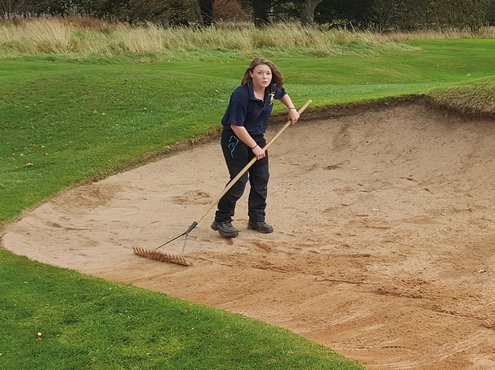
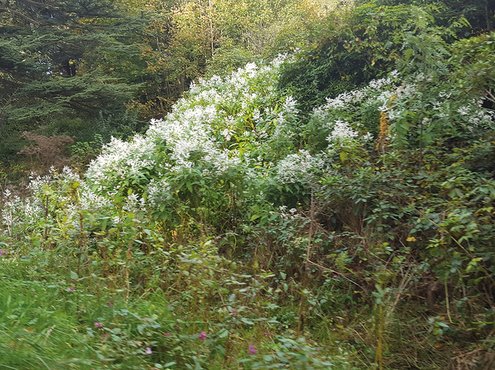
Two of these quirks are Japanese knotweed and Himalayan balsam. Last year, they decided to make these a priority and followed a programme of spraying and manual removal.
Asked about everyday regimes, Andy summed them up like this: "We tend to cut about a half inch on the fairways, an inch for the semi - we used to have two cuts, but now it's just the one - and the tees are usually about 10mm, aprons 7mm and the greens a good 3mm in the summer. We change those greens to about 6mm in the winter."
"The greens are fast enough, but not electric. We're looking to buy some new kit to get those greens extra-fast. Thankfully, the members are very happy with how they are now."
"It's a good course. We're trying to use compost teas, using a Graden machine too, and every time we use the greens irons, they make a real difference."
"The golfers love it when that goes out. It puts maybe a foot and a half on the speed straight away."
Bobby Shafto's gone to sea ...
The castle was originally founded many centuries ago by the chief of the Anglo Saxon Bulmer family whose last male heir, Bertram Bulmer, had a daughter called Emma who married Gilbert De Neuville, a Norman baron who had come to England with William the Conqueror. De Neuville's descendants were called the Nevilles and were the owners of Brancepeth Castle until the sixteenth century.

In 1569, Brancepeth was confiscated from the Nevilles by the crown following their involvement in the Rising of the North, a plot to overthrow Queen Elizabeth I. The Nevilles had been the chief instigators of this rising which had been plotted at Brancepeth and Raby Castle with the assistance of the Percys who were the most powerful family in Northumberland.
Brancepeth Castle remained in the hands of the crown for a number of years until King James I gave it to Robert Carr, Earl Of Somerset. Later, the castle was taken from Carr when he was found guilty of the murder of Sir Thomas Ovebury. From Carr it passed to the wealthy son of a Gateshead blacksmith called Ralph Cole who also bought Kepier Hospital.
The next owner was Sir Henry Bellaysyse, whose daughter Mary fell in love with Bobby Shafto, who lived at Whitworth Hall near Spennymoor, just across the River Wear from Brancepeth. Miss Bellaysyse's love for Bobby became the subject of a very famous north country song, but alas Mr Shafto had eyes for someone else and Mary is said to have died of a broken heart.
In 1796, Brancepeth was bought by William Russell, a Sunderland banker. The Russels of Brancepeth became one of four great coal owning families in the north called the 'Grand Allies' and William's son Matthew became the richest commoner in England. Later, by marriage, Brancepeth became the property of Lord Boyne who is commemorated in the name of a public house a little further to the north at Langley Moor.
The castle is now in the private ownership of the Dobson family, who bought the castle in 1978. Margaret Dobson did much to restore the fabric and interior of the building, including the lead roof, which had been stripped by an earlier tenant.
She refurbished many of the main function rooms for use as a venue for auctions and twice-yearly craft fairs. Shakespearean plays were staged in the main courtyard and rooms were rented to post-graduate students at Durham University.
